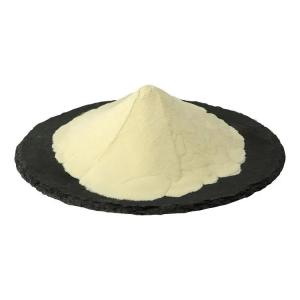News list
News Center
Hot Product
News
Phosphoric acid in nutrition education materials
Time:2025-10-22
1. Introduction
Phosphoric acid (H₃PO₄) is an important chemical compound commonly used in the food industry and educational discussions about nutrition and food additives. In nutrition education materials, phosphoric acid is often introduced as an example of how chemistry influences food quality, preservation, and formulation. Its inclusion helps students and the public understand the connection between industrial food processing and everyday dietary choices.
2. Understanding Phosphoric Acid
Phosphoric acid is a colorless, odorless, and moderately strong acid derived from phosphate minerals. It is widely applied in both industrial and food settings, with a high degree of purity required for food-grade products. In educational contexts, it serves as a practical example of an inorganic acid that plays multiple roles in the global food system, from agriculture to packaged foods.
3. Educational Focus in Nutrition Studies
In nutrition education, phosphoric acid is discussed not only as a food additive but also as part of the broader topic of phosphorus chemistry and nutrient balance. Teachers use it to illustrate:
How acids regulate food pH and stability.
The role of phosphates in the body and food chain.
The technological functions of food additives in modern diets.
By including phosphoric acid in lessons and textbooks, educators can link chemistry principles with real-world nutrition practices.
4. Representation in Learning Materials
Nutrition textbooks, multimedia courses, and classroom experiments often reference phosphoric acid to explain food acidity, processing techniques, and labeling regulations. Visual materials such as ingredient charts and food additive lists help learners identify where phosphoric acid appears, particularly in beverages and processed foods. These educational tools encourage critical thinking about food composition and consumer awareness.
5. Integration with Public Health Education
Public health campaigns and school nutrition programs sometimes incorporate information about phosphoric acid to promote understanding of food labeling and ingredient awareness. By learning about compounds like phosphoric acid, individuals can make more informed choices about their diets and understand how food chemistry affects taste, texture, and preservation.
6. Global Educational Context
Different countries present phosphoric acid within their nutrition education frameworks according to local dietary patterns and food regulations. In some regions, it is used to teach food science and safety, while in others, it serves as an entry point to discuss the balance between natural and processed foods. Its inclusion highlights the global nature of food production and the need for consistent educational messaging.
7. Conclusion
Phosphoric acid serves as an effective teaching tool in nutrition education materials, bridging the gap between chemistry, food science, and public understanding. Through its study, learners gain insight into the science behind modern food systems and the importance of informed dietary choices. By integrating phosphoric acid into educational discussions, nutrition education can better prepare individuals to navigate the complexities of today’s food environment.
Phosphoric acid (H₃PO₄) is an important chemical compound commonly used in the food industry and educational discussions about nutrition and food additives. In nutrition education materials, phosphoric acid is often introduced as an example of how chemistry influences food quality, preservation, and formulation. Its inclusion helps students and the public understand the connection between industrial food processing and everyday dietary choices.
2. Understanding Phosphoric Acid
Phosphoric acid is a colorless, odorless, and moderately strong acid derived from phosphate minerals. It is widely applied in both industrial and food settings, with a high degree of purity required for food-grade products. In educational contexts, it serves as a practical example of an inorganic acid that plays multiple roles in the global food system, from agriculture to packaged foods.
3. Educational Focus in Nutrition Studies
In nutrition education, phosphoric acid is discussed not only as a food additive but also as part of the broader topic of phosphorus chemistry and nutrient balance. Teachers use it to illustrate:
How acids regulate food pH and stability.
The role of phosphates in the body and food chain.
The technological functions of food additives in modern diets.
By including phosphoric acid in lessons and textbooks, educators can link chemistry principles with real-world nutrition practices.
4. Representation in Learning Materials
Nutrition textbooks, multimedia courses, and classroom experiments often reference phosphoric acid to explain food acidity, processing techniques, and labeling regulations. Visual materials such as ingredient charts and food additive lists help learners identify where phosphoric acid appears, particularly in beverages and processed foods. These educational tools encourage critical thinking about food composition and consumer awareness.
5. Integration with Public Health Education
Public health campaigns and school nutrition programs sometimes incorporate information about phosphoric acid to promote understanding of food labeling and ingredient awareness. By learning about compounds like phosphoric acid, individuals can make more informed choices about their diets and understand how food chemistry affects taste, texture, and preservation.
6. Global Educational Context
Different countries present phosphoric acid within their nutrition education frameworks according to local dietary patterns and food regulations. In some regions, it is used to teach food science and safety, while in others, it serves as an entry point to discuss the balance between natural and processed foods. Its inclusion highlights the global nature of food production and the need for consistent educational messaging.
7. Conclusion
Phosphoric acid serves as an effective teaching tool in nutrition education materials, bridging the gap between chemistry, food science, and public understanding. Through its study, learners gain insight into the science behind modern food systems and the importance of informed dietary choices. By integrating phosphoric acid into educational discussions, nutrition education can better prepare individuals to navigate the complexities of today’s food environment.


 CN
CN





